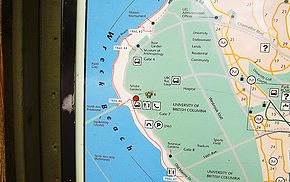Course:GEOG350/Archive/2013ST1/Wreck Beach
Appearance
(Redirected from Course:GEOG350/2013ST1/Wreck Beach)
Introduction
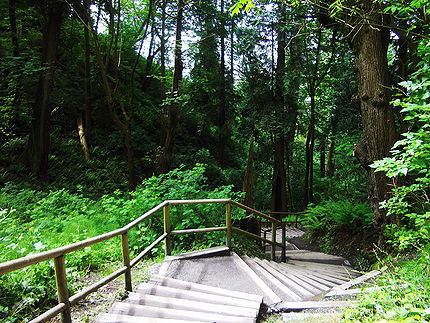
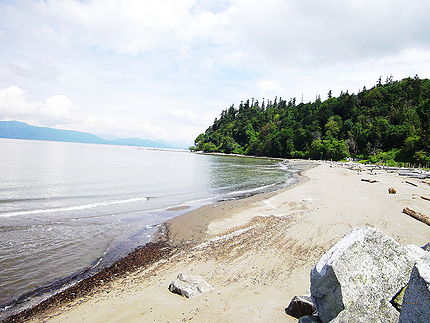
- Wreck Beach is part of the Pacific Spirit Regional Park and is associated with the university endowment lands just across the street from the University of British Columbia. This popular attraction is known for being the only legal “clothing-optional” beach in Canada. The beach spans approximately 7.8km (Qiao, 2010), from Acadia Beach down towards the northern arm of the Fraser River. The shore is predominantly made up of rocks and forested area, but there are a few sandy stretches for beach goers to enjoy the sun. Along with these sandy banks are the massive logs that washed ashore from the logging ships coming into port. There are various trails that span from one end of the Pacific Spirit Regional Park to the other. Though Wreck Beach is located at the bottom of the Point Grey cliffs, there are a few stairways that people can take from Marine Drive in order to get down to the waters edge (BC Passport, 2013). Walking paths like that of trail 3, lead to Tower beach, another major destination, or trail 4 which leads to the very end of Point Grey. Due to it’s proximity to UBC, beachgoers are typically students and local residence but Wreck Beach has been known to attract people from all around the world to come and visit this spectacular waterfront.
- Although this place is beloved and full of excitement, there are some major social and environmental issues that are occurring behind the scenes at this beautiful beach front. For many this is a place to come and relax or get away from the fast paced economic and government run lifestyle that is so common in the world today. Even though Wreck Beach might seem fine at first glance, there are some major battles being fought in order to keep this area pristine and natural. Some of the topics that will be discussed more are social aspects dealing with local pollution due to excess watercraft and environmental impacts like cliff side erosion due to massive new construction adding weight to the cliff face. These issues and others will be raised to show that Wreck Beach is not all “fun in the sun” but a place that needs help in order for it to stay the way it is and always has been; a place for all to enjoy nature at its most primitive state.
The Story Behind Wreck Beach
- For a very long time, Wreck Beach has been an iconic destination within Vancouver and is one of the worlds greatest “clothes optional” beaches (Lynch, 2003) From as far back as the 1930’s people have been sneaking off to secluded beaches for privacy and the freedom to go “au-naturel” without lurking on-lookers. Ever since the University of British Columbia (UBC) was built back in the 1920’s, an increasing number of people have been drawn to this shoreline for both its free spirit and its breathtaking views in nature. Though this spot became widely known as a “nudist” beach, it was not until October 30th 1991 that the Greater Vancouver Regional District (GVRD), officially declared Wreck Beach to be Canada’s first-ever nude beach (Woyche, 2003, 187). Once the development of the new Marine Drive residencies had finished, Wreck Beach became a much more popular destination. Along with its newfound popularity, came a new sense of community ownership and pride. With its laid-back attitude and friendly faces, it makes for a great place to be (Jepson, 2010, 93). Importantly however, with an expanded role as a tourist destination and with UBC’s call for growth, there have been many problems. Indeed, both natural and social issues have arisen from a variety of activities like university-related construction, neglect, landslides, and pollution. Such issues, we believe, need to be dealt with swiftly before Wreck Beach is ruined (Williams, 2013).
The Preservation of Wreck Beach and Its Place in Society
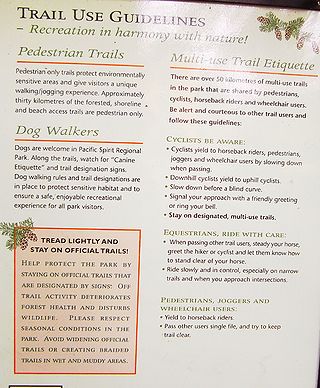
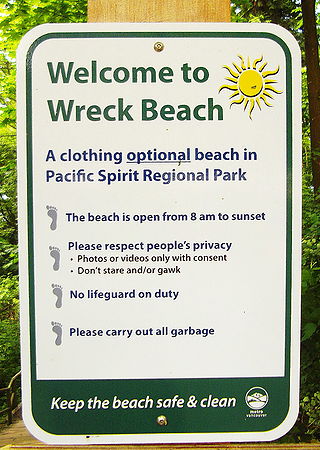
Somewhere to Call Your Own
- Wreck Beach is also home to a vibrant history of community, including, for instance, draft dodgers who, in the 1970s, organized a “nude-in” to secure the use of the nude beach (Hemsing, 2005, 13). More recently, the management of the beach and its outlook has been represented mainly by a small group of beach regulars who think of this place as a second home. Today, the beach has a closer sense of community than other beaches in Vancouver - there are more regulars, frequent self-organized beach cleanups, and annual events such as the photo-shoot, the Bare Buns Run, and Wreck Beach day. The community has a strong sense of self-policing, especially against drug dealers and sex offenders (Hemsing, 2005, 19-20). With such a strong sense of communal autonomy and an identity based on nature, it is no surprise that issues which jeopardize the beach’s original qualities are of great importance to beach enthusiasts.
A Spiritual Center
- Wreck Beach provides a place of home, refuge, escape, and sanctity for its diverse user groups. Since the 1960s, Wreck Beach has been a site of political struggle due to beach regulars’ attachment to this quality of place (Williams, 2013). Its proximity to an expanding university and city make it one of the last “green spaces” in the area. As a result, many people with close ties to this space have been contesting development that can further threaten Wreck Beach’s “natural sanctity”. It is often expressed that the beach is a sacred healing center - however, the essence of this place is often difficult for beach regulars to articulate because of these visceral, spiritual qualities. For example, a beach regular explained: “I think that one of the things that one experiences in coming to such a place regularly over a great period of time is the ebb and flow of the seasons in nature that just goes into your being and in a way that is not possible to describe - perhaps if you are a poet or a painter you can describe some of that” (Hemsing, 2005, 17). The indescribable spiritual nature of the place suggests that there is much more significance in experiences than words can describe. It suggests that there is still importance, belonging, and value in non commodified places.
Protecting "Place"
- One recent issue that garnered attention from Wreck Beach users was the construction of the Marine Drive Residences near the unstable cliff areas. Among issues of physical deterioration of the beach’s quality, Wreck Beach regulars also protested the buildings as a ‘visual impairment’. They stated that, “from the beach, one has the same view that Captain George Vancouver and Simon Fraser had and the Musqueam had of the [Point Grey Cliffs]’” (Hemsing, 2005, 41). As preservationists, many people who visit Wreck Beach are concerned with the continuity of landscapes through history. Engaging in history helps this group build morale, collective memory, and a shared identity. Wreck Beach is the only public space in Vancouver designated clothing optional, and is the second largest clothing-optional beach in North America (Woyche, 2003, 187). Considering these facts, Wreck Beach is a community with a unique sense of social separation within a quickly modernizing and urbanizing world.
Shedding Clothes
- At Wreck Beach, the shedding of clothes is recognized as the shedding of society's materialistic and consumerist facades. It is a resistance against social rules and status, while celebrating nature and freedom. Wreck Beach is an escape from modern capitalism, urbanization, materialism, and mass consumerism. It is a unique space based upon the values of social exchange, a direct contrast to the capitalist ‘abstract space’ which over determines the value of economic or commodity exchange. (Hemsing, 2005, 27). As one regular explained it, “"We went through... (w)hat I think were socially bleak years where it felt like we were going backwards with Reagan and Bush... But still, Wreck Beach seemed to foster a more tolerant and spontaneous and natural existence and that is part of the reason why I go there and part of the reason many people go there is that it is a way of remaining sane no matter what else is happening in the world" (Hemsing, 2005, 27).
- The preservation of Wreck Beach is important because so many people feel a connection to it and it represents an iconic part of Vancouver’s history. If such a place was ruined or dramatically transformed, it would have considerable impacts on not just the area itself but the entire community who considers Wreck Beach to be a part of their home.
Environmental Issues
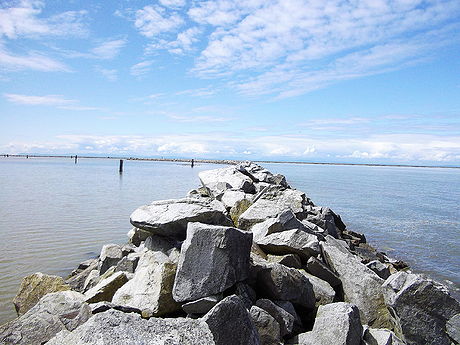
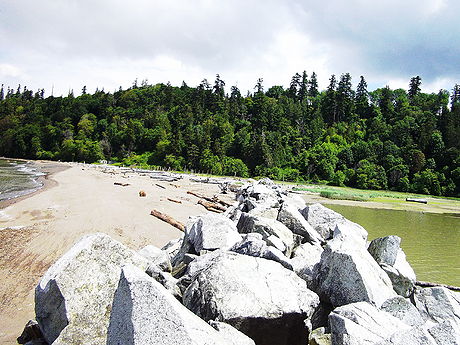
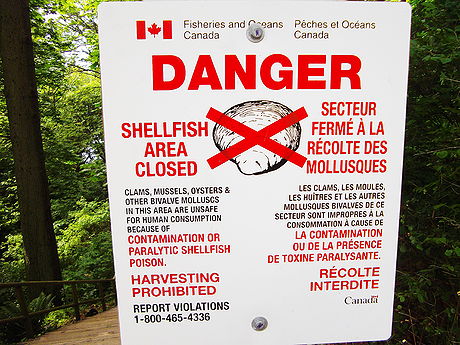
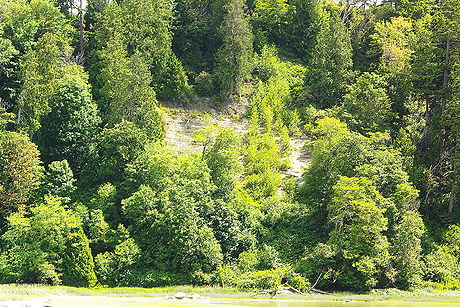
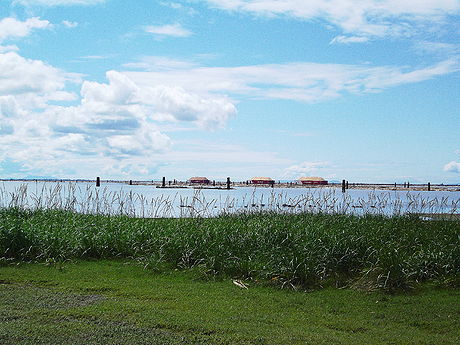
Fighting for Nature
- Throughout the long history of Wreck Beach, there have been many political and environmental struggles due to beach regulars’ attachment to place and ever growing population. Because it is such a “free spirited” place, many people who go there on a regular basis have been distressed and worried about its well being in the wake of environmental degradation. Some issues that the Wreck Beach Preservation Society has been concerned with in recent times are things like contaminated fill, erosion, the breakwater, and the recent construction of the Marine Drive Residences (UBC Housing Action Plan, 2013).
Breakwater
- The large rocky breakwater located on the far side of Wreck Beach was installed as a means of protecting the shoreline from erosion due to wave activity. Breakwaters are installed off the shoreline and are designed take the impact of the waves and reduce the stress on the shoreline (Dempster, 2005). The area directly behind the breakwater becomes a safe-haven from erosion, and only deposition occurs, resulting in larger, more luscious beaches (Dempster, 2005). However, the areas adjacent to the breakwater are not protected and continue to erode, some times at an even faster rate than it would have originally without the breakwater, which leads to the development of a very thin and uneven shoreline (Dempster, 2005). It is difficult to determine whether the breakwater is advantageous to Wreck Beach, or if, instead, natural erosive processes should be left to alter the shoreline. It is quite apparent that the erosion on the adjacent side of the breakwater is having an ill effect on both the extended beach and walking trails but does provide safer sandy beaches for the public to enjoy. These kinds of things are what make it hard to fully understand the issue and come up with a fix for it. Although the breakwater keeps the waves offshore and creates calmer swimming conditions, it also allows calmer waters for boaters, which can heavily add to pollution issues and unwanted watercrafts ruining the tranquility of the area.
Pollution
- The issue of loud, polluting motorists being permitted close to shore has also been pressing in the last decade. The major complaints pertain to pollution, noise, and unsafe swimming conditions (Colbourn, 2013). Since 2002, the Wreck Beach Preservation Society has been trying to get the Governments attention about the danger of watercraft to the general safety of swimmers and well being of the natural landscape. With a handful of “careless” boat operators being present close to the shore, many beach goers are becoming concerned to the point of petitioning to be heard. A petition with over 2,500 signatures was given to Metro Vancouver last year to try and ban all motorized watercraft from the Wreck beach area (Sinoski, 2013). Along with the dangers of a reckless boater to swimmers, there have been quite a few reports that they also cause excess noise pollution. Apparently the sound has been so loud that some have said that, “jet-skis and party boats are ruining the feel and enjoyment of the beach” (Frank, 2012). Even though boating can be fun, it can be very annoying and disruptive for beach goers who have to listen to and deal with these intrusions.
- Over the last decade or so, recreational boating has become even more popular which has lasting effects on shorelines and the waters that surround them. Though it is true that a single boat contributes very little to the water pollution in a specific area, a larger number can have quite a large impact on things such as water toxicity levels, increased pollutant concentrations in aquatic organisms and sediment, and increased erosion rates and much more (U.S. Environmental Protection Agency, 2013). Already there are signs of biological contamination of Shellfish at Wreck Beach due to polluted waters. Though it is difficult to directly correlate recreational boating to the contamination of shellfish in this region, it is likely that the high volume of boats in the area played a significant role. If Wreck Beach is to stay the same or improve, boating laws in the vicinity must be addressed.
Construction
- The recent construction that was done for the Marine Drive Residences has resulted in an increase of landslides occurring on the adjacent Point Grey cliff face. Prior to the start of construction, there was a five-year period where this region saw no landslides at all (Williams, 2013). The correlation is difficult to ignore, and has resulted in an outcry from beach-goers. The introduction of heavy machinery and the resulting increase in load on the supporting cliff face, both during construction and following after the large apartment complexes were built, has put an unbearable strain on this fragile region of Pacific Spirit Regional Park (Qiao, 2010). When weight is added to an already strained hill or cliff, it can cause that area to “fail”, resulting in a landslide event that is not only degrading to the environment but also a major hazard to people on the beach below.
- The Point Grey Cliffs, where the Marine Drive Residences were built, house a delicate aquifer topography, which lies precariously on the brink of the cliff face (Qiao, 2010). It is because of this that the Wreck Beach Preservation Society feared an introduction of new residences due to the nature of what that could mean for the integrity of the hill slope and future landslide potential (Qiao, 2010). With such an insubstantial foundation to build upon, the risk of landslide is greatly increased. It has since become public knowledge that the studies conducted prior to development, which were intended to determine the associated risks, neglected to consider the cliff face or wildlife as relevant issues because this group thought it was far back enough that it would not be harmful (Hickling, 2005). The prevention of urban encroachment and further deterioration of the beach’s quality are important to Wreck Beach regulars. As a place, Wreck Beach represents the diminishing opportunity to enjoy nature and naturism. It is one of the last places in Vancouver that allows people to be able to escape from the modern world, which is full of economic values and constant destruction of nature. The existence of Wreck Beach as an important “place”, is focused on both environmental issues by trying to preserve one of the last “green spaces” in Vancouver, and social issues because it represents a small resistance against the seemingly universal attitude pushing for modernization.
Solutions
- Wreck Beach is one of those places that no one ever wants to lose. Since it is such a cherished place within Vancouver, there are a plethora of solutions to the problems we mention above stemming from various interest groups. The driving force that can be found behind all of the potential solutions is most definitely the Wreck Beach community, which includes The Wreck Beach Preservation Society, the regular beach goers, the local community base and all of the tourists that visit the beach during their leisure time. Without each of these different groups of people, Wreck Beach may not have been kept as pristine and beautiful as it is today. Over the years there have been many protests like that of the draft dodgers who organized a “nude-in” mentioned above, or more recently the petition for banning recreational boats near the beach in 2012 (Sinoski, 2013). Regardless of the outcome of some of these “movements”, the Wreck Beach community bands together during hard times and makes a difference no matter the cost.
- Some of the most recent solutions to these issues above are in the works today and might be part of the near future for Wreck Beach.
- With regards to the Breakwater on the far side of the beach, that structure will most likely need to stay for logging purposes but there might be a way to help prevent erosion on the far side. By adding a large amount of sediment like that of medium sized rocks or built up sand from the opposite side, this can potentially offset or slow the coastal erosion that is happening presently. Though this might take some effort on the community’s part, this could be very beneficial to the preservation of the walk/running trails and the beautiful landscape that is Wreck Beach.
- Dealing with motorized boat traffic and inexperienced water skiers is something that is quite familiar to The Wreck Beach Preservation Society. These two activities are not only sources of pollution to the beach, they are also two public safety hazards. Since there are no lifeguards at Wreck Beach monitoring swimmers, this can make for a very dangerous combination. The Wreck Beach Preservation Society has been quite concerned about this problem for a while and has now started the process of creating signs that will be posted in the water or on buoys (Sinoski, 2013). these signs will tell boaters where they can and can't go with respect to the beach.
- One of the largest issues plaguing the continued upkeep of Wreck Beach is the constant development being done by UBC above the cliff face. Luckily the construction of the Marine Drive Residences is finished but what about future endeavors? The Wreck Beach Preservation Society is still quite concerned with this due to potential landslides that could occur and harm beach goers and the whole environment at large. (Wreckbeach.org/erosion) In order to hopefully prevent such things from continuing, The Wreck Beach Preservation Society has communicated their concerns with UBC and will continue to keep in contact so that these issues don’t surface again. To help fix what damage has already been done to the point grey cliffs, it seems like it would be beneficial to plant some deep-rooted fauna to strengthen the hillside and prevent any more harm from erosion.
- These solutions and a few others are potential plans of action to make sure Wreck Beach is protected from these issues. With a Strong community, innovative thinking, and a lot of willpower, Wreck Beach will surely be here for many more years to come.
Conclusion
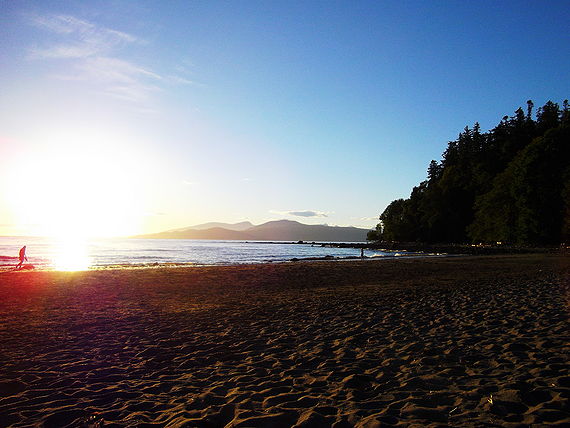
- In sum, Wreck Beach has not only demonstrated inherent environmental value, but a cultural, spiritual, and recreational significance as well. The scenic trails and the beach itself play an integral role for both the ecosystem, hosting a copious amount of foliage and wildlife, and the community at large by providing a safe haven of sorts. Besides the obvious environmental benefits that have been mentioned above, the scenery and social values of having such wildlife and foliage are clear enough that this place is one that needs to be preserved.
- The historical context that thrives in each grain of sand at Wreck Beach has proven monumental to Vancouver and the whole of Canada. As Canada’s first-ever nude beach, this place symbolizes many things for many people, ranging from being free of the societal restraints and consumerism all around us to simply a place for people to relax and enjoy their time off. The many facets of Wreck Beach that have established it’s identity as a “place” rather then just a "space" make it irreplaceable and worthy of maintaining.
- Due to the unconventional nature of this place, with problems ranging from societal concerns to physical geological dangers, the solutions brought to the table are always faced with implications. Many interest groups all have varying sayings in what goes on here – UBC development, environmentalists, recreational beach-goers, local activist and community groups, to name a few – which is why the solutions are so speculative and broad. However, the culture of this area has been longtime preserved by the beach frequenters and community groups. These people are the ones truly passionate about preservation of the area, which make them an influential force to be reckoned with.
- Despite the many controversies that arise as a result of the unconventional, wicked nature of the place and interest groups that have a say, there are viable, feasible solutions that have and will be implemented to preserve the integrity of Wreck Beach on as many levels as possible. Common grounds will be met and work is undergoing to ensure that the environmental integrity of the beach and surrounding areas are preserved, pollution is contained, and wildlife is not disrupted, while still maintaining the ease of access in terms of recreational and leisure purposes. In the long run, we want to see Wreck beach keep its identity throughout the years and maintain the same value it holds now as one of Vancouver's most monumental and unique "places".
Bibliography
- BC Passport. 2013. Beaches. Accessed June 19, 2013. http://bcpassport.com/vancouver-adventure/vancouver-beaches/
- Colebourn, J. 2013. Wreck Beach society urges ban on vessels close to shore. Accessed June 15, 2013. http://globalnews.ca/news/388709/wreck-beach-society-urges-ban-on-vessels-close-to-shore/
- Dempster, H. 2005. Breakwater; USPTO Patent Full-Text and Image Database. Accessed June 13, 2013. http://patft.uspto.gov/netacgi/nph-Parser?Sect2=PTO1&Sect2=HITOFF&p=1&u=%2Fnetahtml%2FPTO%2Fsearch-bool.html&r=1&f=G&l=50&d=PALL&RefSrch=yes&Query=PN%2F6935808
- Frank, K. 2012. Wreck Beach Preservation Society Seeking Noise By-Law. http://kevinfrank.ca/blog/wreck-beach-preservation-society-seeking-noise-by-law/
- Hemsing, N. 2005. Production of place: community, conflict and belonging at Wreck Beach, The University of British Columbia. 1-48.
- Hickling, J. 2005. UBC Residential Housing Threatens Wreck Beach in BC. Accessed June 15, 2013. http://www.watershedsentinel.ca/content/ubc-residential-housing-threatens-wreck-beach-bc
- Jepson, T. 2010. The Rough Guide to Vancouver. Penguin, 1-264.
- Lynch, D. 2003. Wreck Beach - Vancouver's Only Clothing-Optional Beach. Accessed June 15, 2013. http://vancouver.about.com/od/beachesparks/tp/wreck-beach.htm.
- Qiao, G. 2010. Everything you need to know about Wreck Beach. The UBYSSEY. http://ubyssey.ca/culture/everything-you-need-to-know-about-wreck-beach/.
- Sinoski, K. 2013. Wreck Beach boating measures to go before committee. The Vancouver Sun. http://www.vancouversun.com/news/Wreck+Beach+boating+measures+before+committee/7928778/story.html
- University of British Columbia. 2013. UBC Housing Action Plan. Accessed June 15, 2013. http://www.planning.ubc.ca/vancouver_home/plans_and_policies/ubc_housing_action_plan.php
- U.S. Environmental Protection Agency. 2013. Managing Nonpoint Source Pollution from Boating and Marinas. http://water.epa.gov/polwaste/nps/outreach/point9.cfm
- Wreck Beach. 2013. The Wreck Beach Preservation Society. http://www.wreckbeach.org/erosion.html
- Williams, J. 2013. Wreck Beach. Wreck Beach Preservation Society. Accessed June 2, 2013. http://www.wreckbeach.org/erosion.html
- Williams, J. 2013. Wreck Beach. Wreck Beach Preservation Society, Accessed June 19, 2013. http://www.wreckbeach.org/.
- Woyche, J. 2003. Au Naturel: The history of nudism in Canada, Federation of Canadian Naturists, 187-195.
